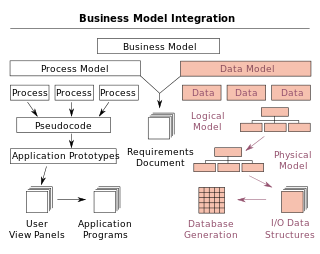 W
WA data model is an abstract model that organizes elements of data and standardizes how they relate to one another and to the properties of real-world entities. For instance, a data model may specify that the data element representing a car be composed of a number of other elements which, in turn, represent the color and size of the car and define its owner.
 W
WData modeling in software engineering is the process of creating a data model for an information system by applying certain formal techniques.
 W
WBuilding information modeling (BIM) is a process supported by various tools, technologies and contracts involving the generation and management of digital representations of physical and functional characteristics of places. Building information models (BIMs) are computer files which can be extracted, exchanged or networked to support decision-making regarding a built asset. BIM software is used by individuals, businesses and government agencies who plan, design, construct, operate and maintain buildings and diverse physical infrastructures, such as water, refuse, electricity, gas, communication utilities, roads, railways, bridges, ports and tunnels.
 W
WIn a relational database, a column is a set of data values of a particular type, one value for each row of the database. A column may contain text values, numbers, or even pointers to files in the operating system. Columns typically contain simple types, though some relational database systems allow columns to contain more complex data types, such as whole documents, images, or even video clips. A column can also be called an attribute.
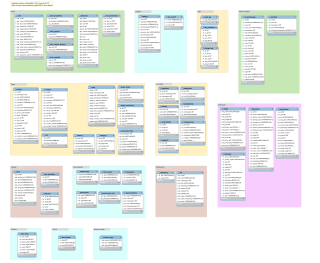 W
WThe database schema is its structure described in a formal language supported by the database management system (DBMS). The term "schema" refers to the organization of data as a blueprint of how the database is constructed. The formal definition of a database schema is a set of formulas (sentences) called integrity constraints imposed on a database. These integrity constraints ensure compatibility between parts of the schema. All constraints are expressible in the same language. A database can be considered a structure in realization of the database language. The states of a created conceptual schema are transformed into an explicit mapping, the database schema. This describes how real-world entities are modeled in the database.
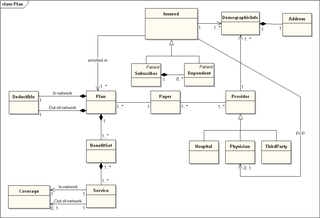 W
WIn software engineering, a domain model is a conceptual model of the domain that incorporates both behavior and data. In ontology engineering, a domain model is a formal representation of a knowledge domain with concepts, roles, datatypes, individuals, and rules, typically grounded in a description logic.
 W
WEXPRESS is a standard data modeling language for product data. EXPRESS is formalized in the ISO Standard for the Exchange of Product model STEP, and standardized as ISO 10303-11.
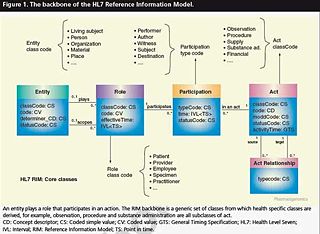 W
WGeneric data models are generalizations of conventional data models. They define standardised general relation types, together with the kinds of things that may be related by such a relation type.
 W
WIDEF, initially an abbreviation of ICAM Definition and renamed in 1999 as Integration Definition, is a family of modeling languages in the field of systems and software engineering. They cover a wide range of uses from functional modeling to data, simulation, object-oriented analysis and design, and knowledge acquisition. These definition languages were developed under funding from U.S. Air Force and, although still most commonly used by them and other military and United States Department of Defense (DoD) agencies, are in the public domain.
 W
WIntegration DEFinition for information modeling (IDEF1X) is a data modeling language for the development of semantic data models. IDEF1X is used to produce a graphical information model which represents the structure and semantics of information within an environment or system.
 W
WIDEF5 is a software engineering method to develop and maintain usable, accurate domain ontologies. This standard is part of the IDEF family of modeling languages in the field of software engineering.
 W
WFor data storage, identification is the capability to find, retrieve, report, change, or delete specific data without ambiguity. This applies especially to information stored in databases. In database normalisation, the process of organizing the fields and tables of a relational database to minimize redundancy and dependency, is the central, defining function of the discipline.
 W
WAn information model in software engineering is a representation of concepts and the relationships, constraints, rules, and operations to specify data semantics for a chosen domain of discourse. Typically it specifies relations between kinds of things, but may also include relations with individual things. It can provide sharable, stable, and organized structure of information requirements or knowledge for the domain context.
 W
WIn systems analysis, a many-to-many relationship is a type of cardinality that refers to the relationship between two entities, say, A and B, where A may contain a parent instance for which there are many children in B and vice versa.
 W
WThe Meta-Object Facility (MOF) is an Object Management Group (OMG) standard for model-driven engineering. Its purpose is to provide a type system for entities in the CORBA architecture and a set of interfaces through which those types can be created and manipulated. The official reference page may be found at OMG's website.
 W
WMultifidelity methods leverage both low- and high-fidelity data in order to maximize the accuracy of model estimates, while minimizing the cost associated with parametrization. They have been successfully used in wing-design optimization, robotic learning, and have more recently been extended to human-in-the-loop systems, such as aerospace and transportation. They include both model-based methods, where a generative model is available or can be learned, in addition to model-free methods, that include regression-based approaches, such as stacked-regression. The approach used depends on the domain and properties of the data available, and is similar to the concept of metasynthesis, proposed by Judea Pearl.
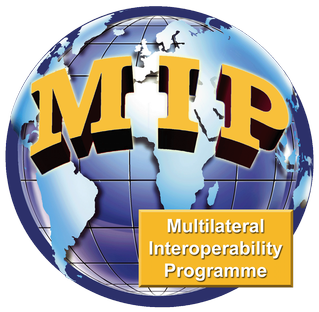 W
WThe Multilateral Interoperability Programme (MIP) is an effort to deliver an assured capability for interoperability of information to support multinational, combined and joint operations. The MIP goal is to support all levels from corps to battalion. MIP's focus is on command and control systems. MIP is a consortium of 29 NATO and Non-NATO nations that meet quarterly to define interoperability specifications for the exchange information between their national Command and Control systems.
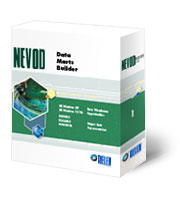 W
WDMB NEVOD, a product of RELEX Group, created in 1996, is an object-oriented repository with possibility of search and analysis of structured information. It is used mainly by security services of commercial organisations and divisions of the Ministry of Internal Affairs of the Russian Federation.
 W
WObject-role modeling (ORM) is used to model the semantics of a universe of discourse. ORM is often used for data modeling and software engineering.
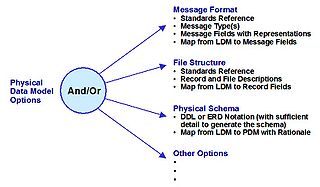 W
WA physical data model is a representation of a data design as implemented, or intended to be implemented, in a database management system. In the lifecycle of a project it typically derives from a logical data model, though it may be reverse-engineered from a given database implementation. A complete physical data model will include all the database artifacts required to create relationships between tables or to achieve performance goals, such as indexes, constraint definitions, linking tables, partitioned tables or clusters. Analysts can usually use a physical data model to calculate storage estimates; it may include specific storage allocation details for a given database system.
 W
WThe Professional Petroleum Data Management Association is a global, not-for-profit organization that works collaboratively within the petroleum industry to create and promote standards and best practices for data management. The Association’s vision is the global adoption of data management standards and best practices throughout the upstream petroleum industry.
 W
WSemantic data model (SDM) is a high-level semantics-based database description and structuring formalism for databases. This database model is designed to capture more of the meaning of an application environment than is possible with contemporary database models. An SDM specification describes a database in terms of the kinds of entities that exist in the application environment, the classifications and groupings of those entities, and the structural interconnections among them. SDM provides a collection of high-level modeling primitives to capture the semantics of an application environment. By accommodating derived information in a database structural specification, SDM allows the same information to be viewed in several ways; this makes it possible to directly accommodate the variety of needs and processing requirements typically present in database applications. The design of the present SDM is based on our experience in using a preliminary version of it. SDM is designed to enhance the effectiveness and usability of database systems. An SDM database description can serve as a formal specification and documentation tool for a database; it can provide a basis for supporting a variety of powerful user interface facilities, it can serve as a conceptual database model in the database design process; and, it can be used as the database model for a new kind of database management system.
 W
WA table is an arrangement of data in rows and columns, or possibly in a more complex structure. Tables are widely used in communication, research, and data analysis. Tables appear in print media, handwritten notes, computer software, architectural ornamentation, traffic signs, and many other places. The precise conventions and terminology for describing tables vary depending on the context. Further, tables differ significantly in variety, structure, flexibility, notation, representation and use. In books and technical articles, tables are typically presented apart from the main text in numbered and captioned floating blocks.
 W
WBernhard Karl Thalheim is a German computer scientist and Professor of Information Systems Engineering at the University of Kiel who is known for conceptual modeling and its theoretical foundational contributions.
 W
WThe three-schema approach, or three-schema concept, in software engineering is an approach to building information systems and systems information management that originated in the 1970s. It proposes three different views in systems development, with conceptual modelling being considered the key to achieving data integration.
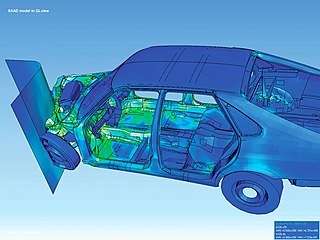 W
WVisualization or visualisation is any technique for creating images, diagrams, or animations to communicate a message. Visualization through visual imagery has been an effective way to communicate both abstract and concrete ideas since the dawn of humanity. Examples from history include cave paintings, Egyptian hieroglyphs, Greek geometry, and Leonardo da Vinci's revolutionary methods of technical drawing for engineering and scientific purposes.
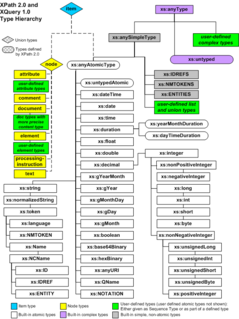 W
WThe XQuery and XPath Data Model (XDM) is the data model shared by the XPath 2.0, XSLT 2.0, XQuery, and XForms programming languages. It is defined in a W3C recommendation. Originally, it was based on the XPath 1.0 data model which in turn is based on the XML Information Set.